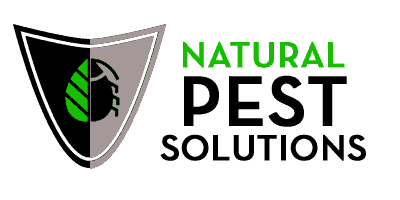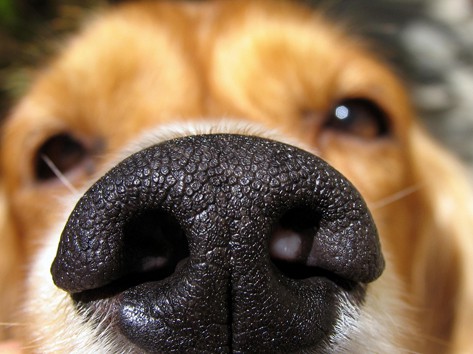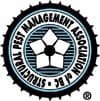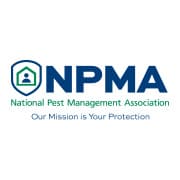Throughout history, dogs have been given all sorts of jobs. Our faithful companions have been used to guard livestock, hunt and retrieve, guide the blind, find people who are lost, and pull sleds across the snow. In modern times, they have even been used to sniff out bombs and illegal drugs. In fact, pest control companies like Manhattan’s Broadway Exterminating even have specially trained canines that can sniff out bugs and other pests! Their bug sniffing puggles, Jeter and Scarlet, have been certified by the National Entomology Scent Detection Canine Association (NESDCA) as bedbug detection dogs.
Did you know that certain breeds of canines can have over 300 million scent receptors in their noses? For comparison, humans have about 30 million. That’s pretty impressive, and it’s no wonder that it’s becoming more and more common to see dogs being trained to sniff out pests like bedbugs, termites, and even mice and rats. Humans have no choice but to rely on sight to find these elusive pests, often having to rip apart walls, floorboards, and furniture to get visual confirmation of an infestation. A specially trained canine can enter a room and sniff out the pests in a matter of minutes, without having to rip anything apart. They can also get into all the tight places a human can’t, like crawl spaces and under homes.
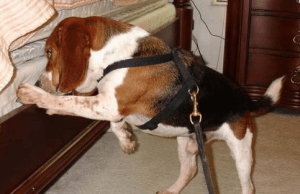
Dog finding pests
You may be a little skeptical about the accuracy of these pest sniffing dogs, but statistics show these specially trained dogs to be about 90% accurate in finding pests. The accuracy rate is only about 30% for humans that are relying solely on visual detection.
Using Dogs to Detect Bedbugs
Bedbug infestations are becoming more and more common. These little critters can be extremely difficult to find with the naked eye. They go through several stages of development, from egg to adult, and in most of those stages, they are smaller than a sesame seed. The off-white coloring of the egg and nymph stages present an added challenge, making them even harder to spot on light colored fabrics, like sheets and mattresses. Even the adults are tiny, measuring no more than a quarter of an inch. As if all that wasn’t bad enough, bedbugs are excellent at hiding and they’re nocturnal.
A well-trained bedbug detection dog can sniff out a live infestation of these blood-sucking pests in a matter of minutes. Dogs can sniff out bugs in places where humans can’t go, like underneath furniture or behind baseboards. There’s no guesswork either because the dog will pinpoint where exactly the little buggers are hiding. This knowledge will help the exterminator to know exactly where to focus the treatment.
Not only that, prevention is a much better option than trying to eliminate these pests once they’re already in the home. Having a bedbug-sniffing pooch inspect your home periodically is a great way to ensure there’s no infestation starting up. This is especially useful in apartment buildings and hotels where bedbug infestations are quite common.
Using Dogs to Sniff Out Termites
According to This Old House, termites cause more than $2.5 million in damage to homes across the United States each year. Wood-eating termites are relentless, but much of the damage they cause can be avoided if they are detected early. The fact that they are good at hiding and staying out of site makes them hard to detect until the damage is already done.
A termite detection dog is trained to smell the methane the nest of termites emits as they digest the wood they are eating. Their super sniffers can find the termites that are hidden in the walls and foundations of homes. They can even detect termites in floorboards underneath of carpeting. No matter how good your termite inspector is, he can’t see through walls or floors, but a dog’s nose can!
Rodent Detection Dogs
It turns out that cats aren’t the only critters that are adept at catching and finding mice and rats! Some breeds of dogs, especially terriers, were actually developed specifically for the purpose of hunting rodents and eradicating them.
With their keen sense of smell, a rodent detection dog can find the hiding spots of rodents much easier than humans can. They can detect rodents in walls, crawl spaces, and even attic insulation. According to an article in the New York Post, dogs are being used to eradicate mice and rat populations in New York City’s rat-infested alleys and subways. Dogs love to hunt, so they think of hunting rodents as a fun game.
Rodent sniffing dogs can not only find rats and their burrows, they can also kill rats. They are also useful for finding mouse burrows, which helps the exterminator know where to treat for the mice. Preventing rodents from entering your home in the first place is always the best way to go, but if you suspect they’re already there, a rodent detection dog could help you find their nests and treat for them more effectively.
Pest Detection Dog Certification
If you decide to hire a pest detection dog, look for one that has been certified by a third-party organization. These organizations provide the public with unbiased confirmation that the dog is truly capable of what it handler claims.
During testing, the testing organization will also make sure the handler knows how to read his dogs signals properly and can recognize the dog’s alert to the presence of pests. The relationship between the dog and the handler is very important. The handler should follow-up the dog’s alert with a visual confirmation, whenever possible. Be cautious of any company that claims their dogs are 100% accurate. No dog or human is 100% accurate!
Be sure to ask questions, too. Find out how long the inspection will last, how much it will cost, and if there’s a guarantee or discount for repeat visits. It’s also important to find out what preparations should be made before the detection dog comes to the home. For example, you will probably want to keep other animals and small children away during the visit to minimize distractions.
To find a pest sniffing dog in your area and check for certification, visit NESDA or WDDO (The World Detection Dog Organization).
Contributed by: Natural Pest Solutions Foremost experts in Pest control and pest inspections.
